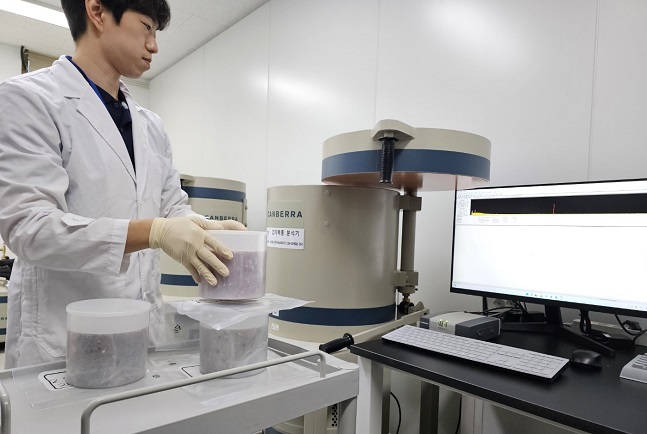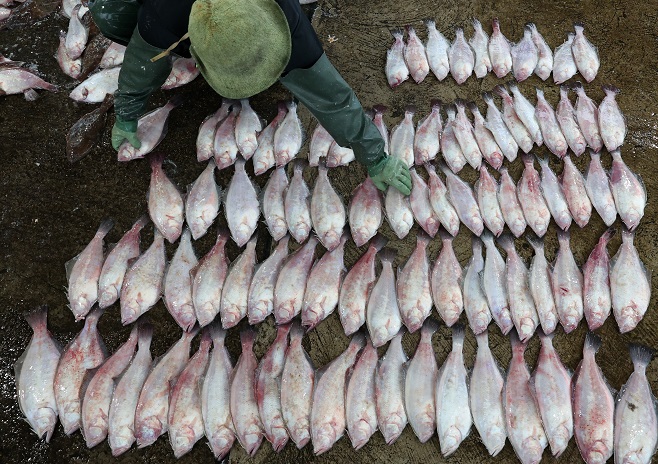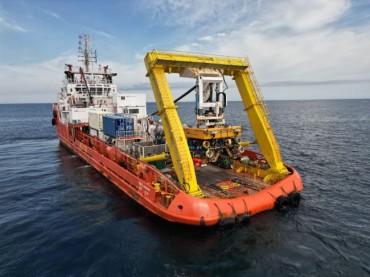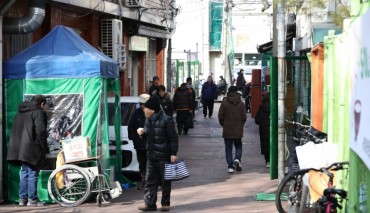
An official conducts a radiation level test on seafood at the Fisheries Safety and Technology Center in southern coastal city of Tongyeong on June 27, 2023. (Yonhap)
CHANGWON, Sept. 1 (Korea Bizwire) — Amid growing public concerns about Japan’s release of contaminated water from its crippled Fukushima nuclear power plant, South Gyeongnsang provincial government has taken a unique approach to reassure its residents about the safety of the water supply through a YouTube broadcast.
This broadcast goes beyond being a mere live video of the extensive radiation testing process and its outcomes.
In an age of concise content, the duration required for radioactivity testing has been significantly trimmed down.
Traditionally, testing seafood for radiation has been a time-consuming procedure.
Following the random selection and packaging of fish from the market, the Fisheries Safety and Technology Center removes the parts of the fish that consumers typically consume.
The collected samples are then processed into a fine powder using a grinder.
The testing process commences by placing the sample within a high-purity, low-magnesium gamma nuclide analyzer.
Subsequently, it takes an additional 2 hours and 47 minutes to unveil the results.
Recognizing the need for efficiency, the provincial government has undertaken the task of shortening this laborious process to around 10 to 20 minutes.
The YouTube broadcast commences about 5 to 10 minutes prior to the announcement of the radioactivity test results.
On the broadcast day, the video features an edited version of the steps leading up to the test, including sample collection and pre-processing.
The live broadcast initiates as soon as the test results become available.
Thanks to the amalgamation of pre-recorded and live broadcasts, residents and viewers are no longer required to make the arduous journey to the testing site for prolonged observations of the radiation test.
They can now conveniently assess the safety of seafood products from the comfort of their homes.

A fisherman checks fish to be auctioned off at a market in the eastern county of Yangyang on Aug. 25, 2023. (Yonhap)
The conception of the YouTube broadcast was rooted in the intention to alleviate public anxiety and enhance communication. It stands as a pioneering initiative among local governments nationwide.
According to an official from the provincial government on Thursday, pertinent departments within the province convened to discuss the scope of broadcasting and the modality of live transmission at a meeting hosted the day before at the Gyeongnam Fisheries Safety and Technology Institute in Tongyeong.
Although an initial proposal to broadcast the complete radiation testing process for seafood was explored, a challenge emerged with the prospect of a real-time comprehensive broadcast extending over a minimum of four hours.
In such a scenario, viewer engagement could be compromised due to the prolonged duration.
The YouTube broadcasts are scheduled to commence during the first week of September, occurring bi-weekly.
During weeks without broadcasts, residents will have the opportunity to observe radiation levels.
These videos will be accessible on the province’s official YouTube channel (Gyeongnam TV).
Lina Jang (linajang@koreabizwire.com)






